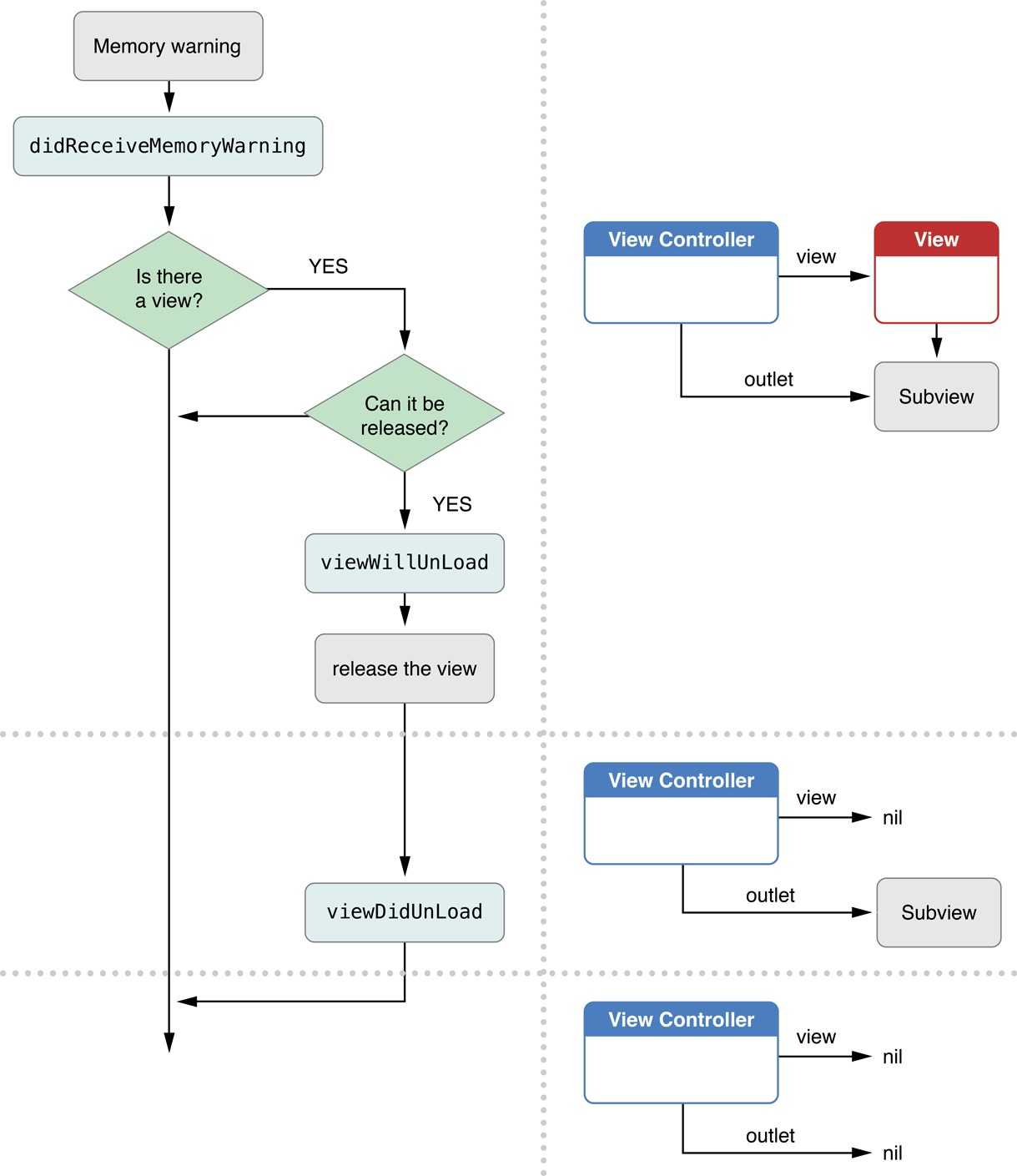标签:
当收到内存警告的时候,应用程序会将警告一级一级往下传递,传递顺序是UIApplication->UIWindow->rootViewController(如果有子控制器)->childViewControllers。
当控制器接收到警告之后,就会调用didReceiveMemoryWarning方法。一般会在这个方法中做几件事:
1、在iOS6之前的处理方式(见图)
2、在iOS6之后的处理方式如下:
- (void)didReceiveMemoryWarning
{
[super didReceiveMemoryWarning];
// Add code to clean up any of your own resources that are no longer necessary.
if ([self.view window] == nil)
{
// Add code to preserve data stored in the views that might be
//添加代码来保存在视图中存储的数据
// needed later.
// Add code to clean up other strong references to the view in
// the view hierarchy.
self.view = nil;
}
}
1> 调用父类的didReceiveMemoryWarning来确保父类的行为能够被执行。
2> 清理控制器不再需要的资源
3> 判断控制器的view是不是正在在窗口上显示,如果不是,先保存跟view或子view相关的数据。清空所有子控件的强引用。
4> 最后设置控制器的view为nil

标签:
原文地址:http://www.cnblogs.com/isugus/p/5540533.html